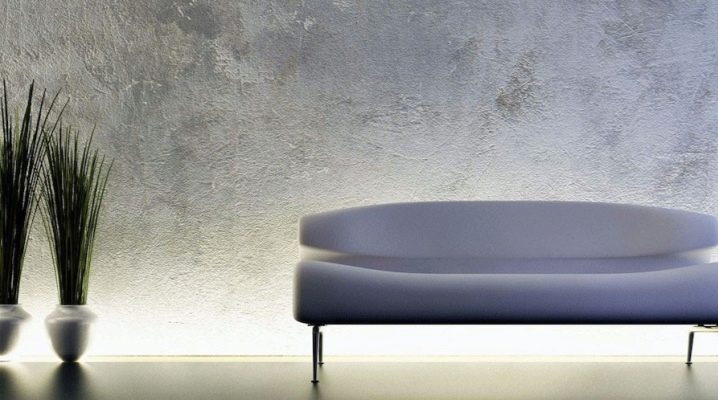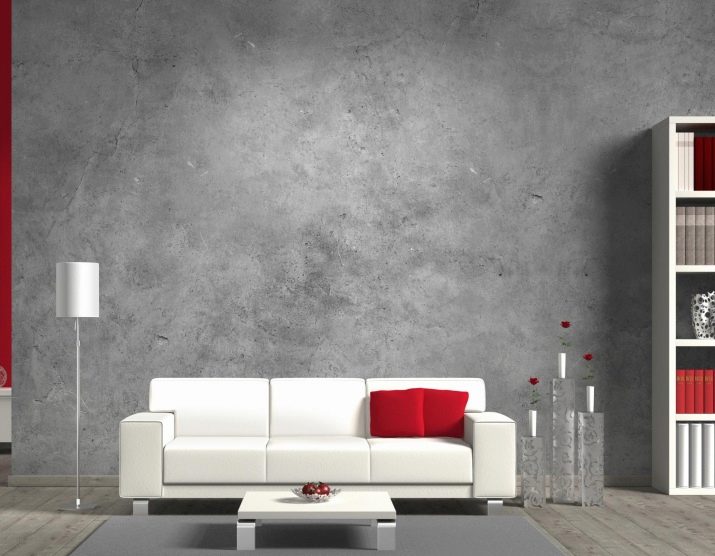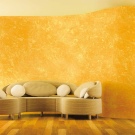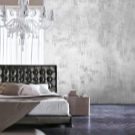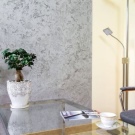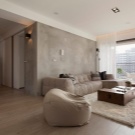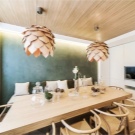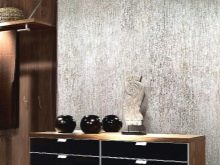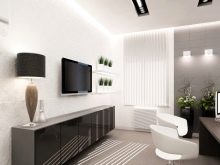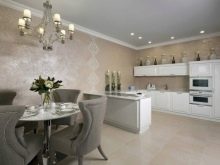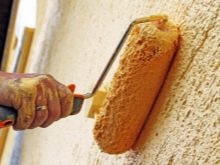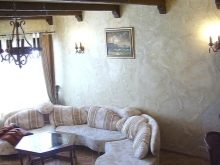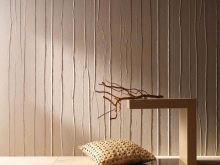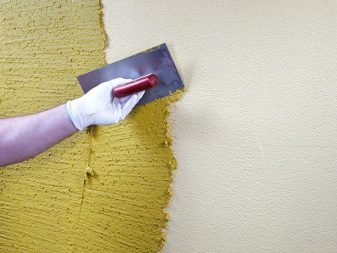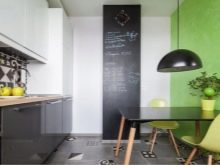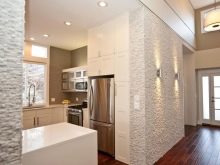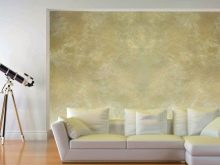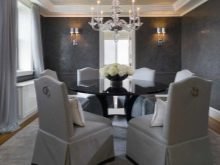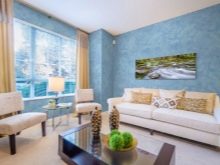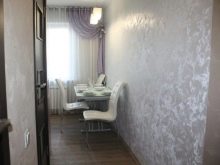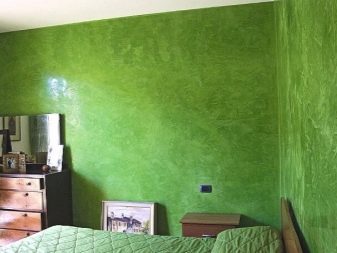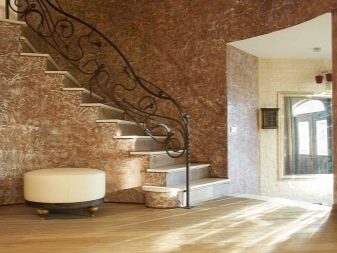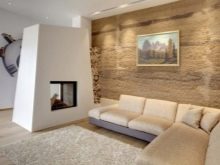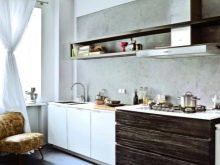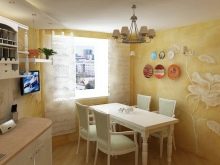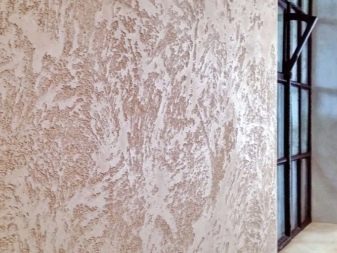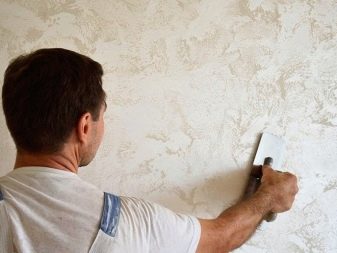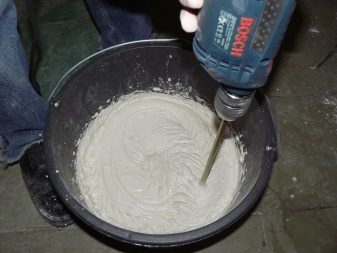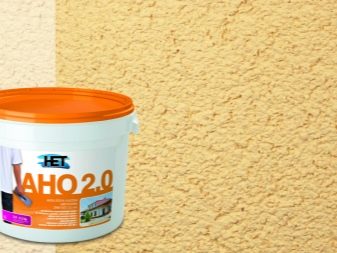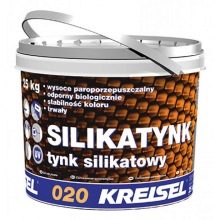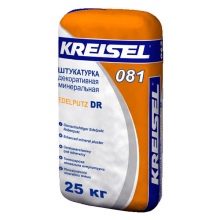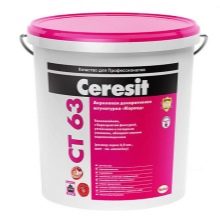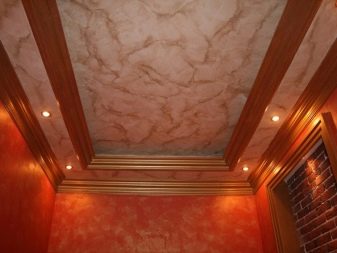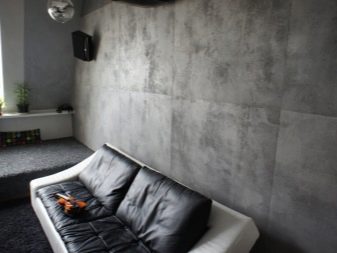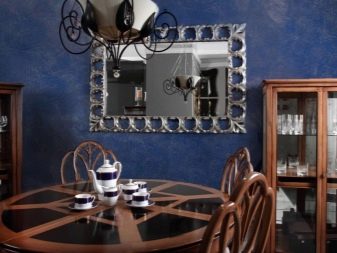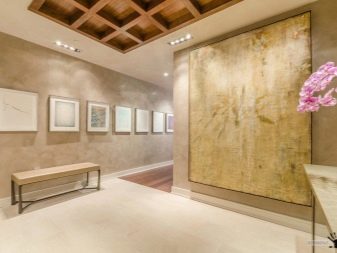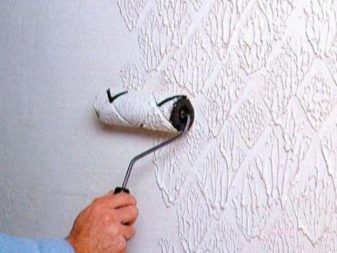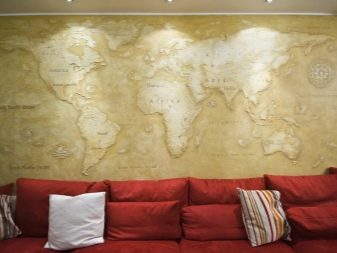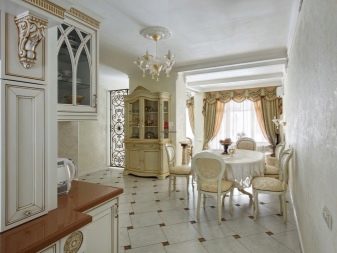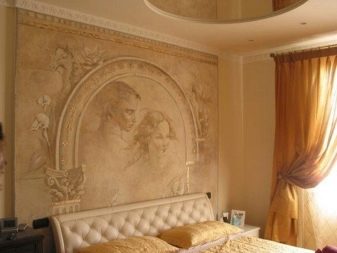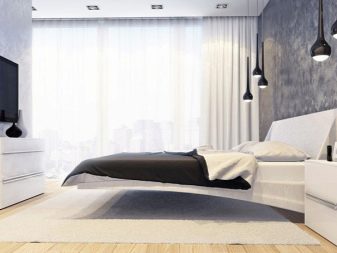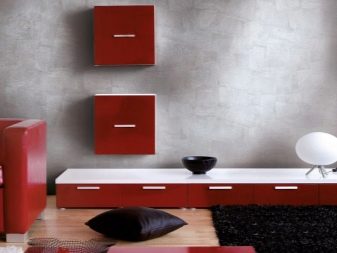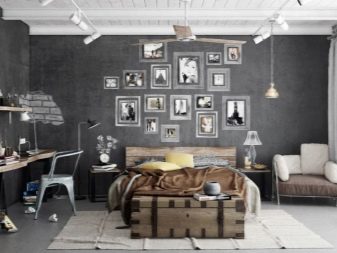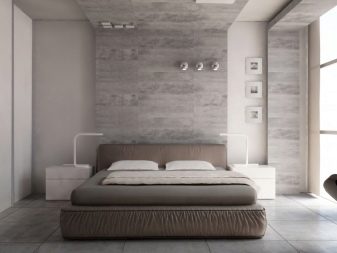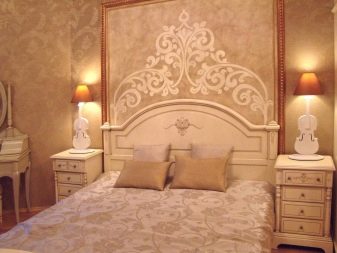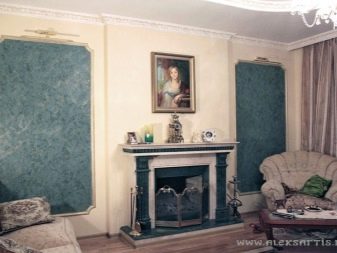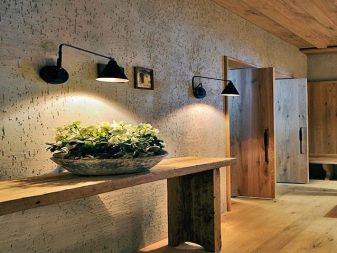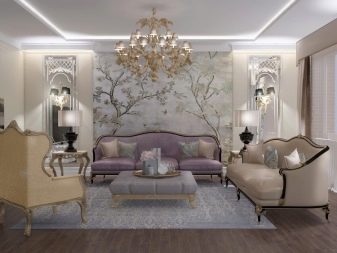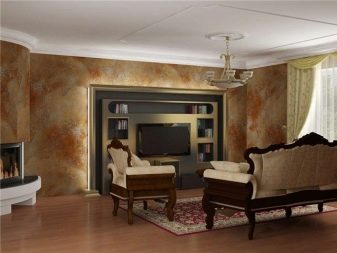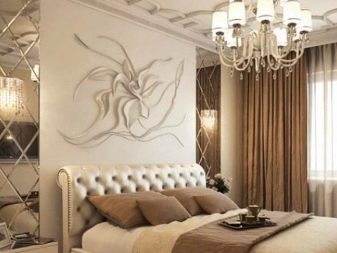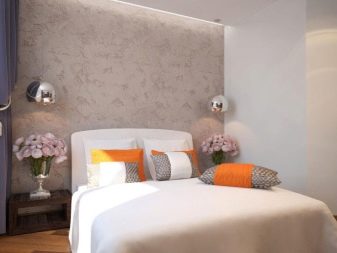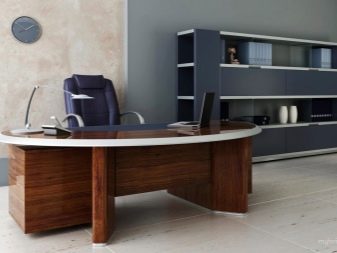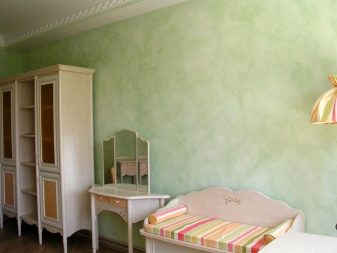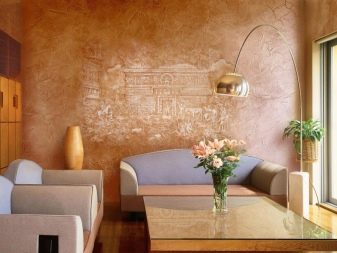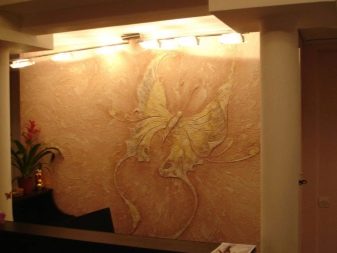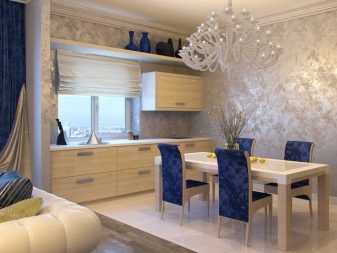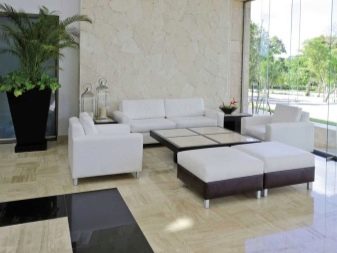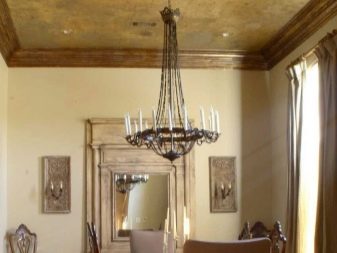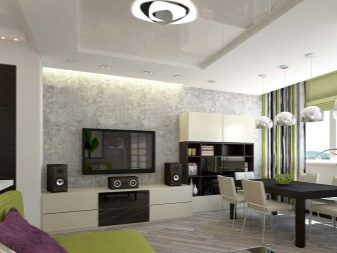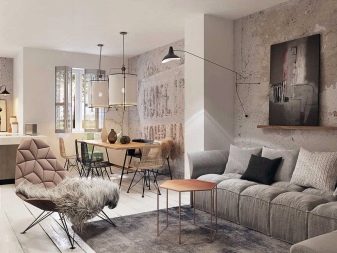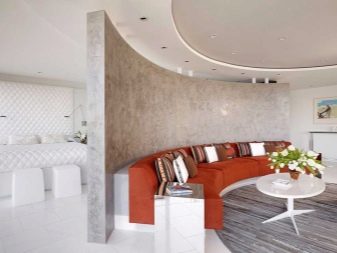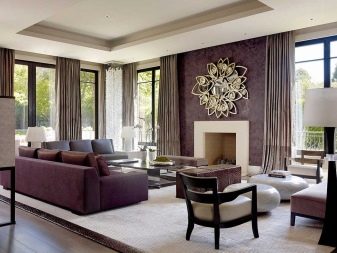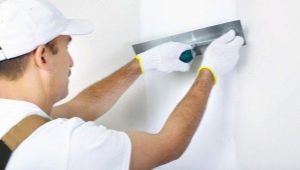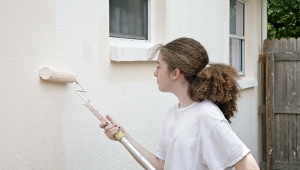Decorative plaster in the interior
The development of modern technology is reflected in the construction industry. Today, along with traditional, conventional types of wall and ceiling decoration, the use of decorative plaster is becoming increasingly popular. The theme is fresh and unbeaten, due to this decor the interior becomes special. We understand the main nuances of this material, we study its advantages, disadvantages, types, current colors and design.
Special features
Under the decorative plaster is commonly understood finishing plaster material. Its main feature is texture. In contrast to the coarse starting surface, which is the preparatory layer and dresser for plaster, this finish has a soft and delicate texture.
Decorative variety for interior coatings is designed to decorate walls, ceilings, ledges, niches, columns and other design features of the premises.
The main component of decorative plaster is a binder. In addition, the composition includes various additives that determine the decorative and operational qualities of the plaster mix. This is a separate type of plaster that is not applied for leveling. Such material is an alternative to classic and liquid wallpaper, painting, wall panels, drywall, laminate flooring, a different wall covering and ceiling.
Decorative plaster has a high plasticity. It is convenient and comfortable in work. A characteristic feature of this finish is the presence of relief. It makes the plaster material special. The pattern is beautiful, corresponds to the fashion trends of interior compositions and is almost always individual. These factors determine the relevance of using decorative plaster instead of the usual lining.
Such mixtures differ from starter varieties in that they do not shrink after drying. At observance of technology of drawing they will not crack, fall off from surfaces. Most of these mixtures have an ecological basis. Therefore, they are harmless to the human body.
An interesting nuance is the fact that decorative plaster can be made independently of ordinary putty. The composition is quite simple and does not require large financial costs.
They can be used in any rooms of the dwelling. Decorative plaster coatings can decorate walls and ceilings in the living room, bedroom, children's room, hallway, hallway, study, home library. They are applicable in decorating the space of a glazed balcony or loggia. At the same time, mixtures can be dyed in any color, they can be supplemented with additives (for example, marble chips, mother-of-pearl or silverfish).
Advantages and disadvantages
Decorative plaster used to decorate the interior, has many advantages.
- It is produced on modern equipment from high quality raw materials. Due to this, it has high performance.
- She is aesthetically attractive. Any interior looks with such decor stylish, beautiful and appropriate. The pattern of textured plaster does not limit the number of details of furniture.
- Regardless of the type of print, it is expressive.With a different design, this decor fits into the interior of the dwelling according to the chosen style direction.
- Decorative cladding on the basis of plaster has a different form of release. You can choose a convenient option based on financial capabilities and personal preferences.
- Such decoration can be a stylish accent or a complete interior decoration of the room. With it, you can zone the space of the room.
- Decorative coating is able to make the desired mood in the interior. With it, you can make the room stylish and cozy.
- Due to the used shade and a certain effect of the material, it is possible to visually increase the height and width of the walls, erase clear boundaries of the floors.
- Textured plaster mixes easier facing surfaces. It allows you to approach the decoration of space creatively, revealing the full potential.
- Decorative plaster is compatible with other finishes. You can combine it with wallpaper, wall panels, cladding, and even inserts of a stretch fabric in plasterboard constructions that go over to the wall.
- This is a durable material.It is resistant to negative environmental factors, temperature extremes and sunlight. With careful care and operation, it will last more than 10 years.
- Plaster mixes are varied. Due to the different additives, they differ in a certain effect. This fact allows you to perform the desired pattern on the coating layer, without the help of experts.
- This material is characterized by thermal insulation properties. It additionally warms the floors on which it is applied.
Not to mention the disadvantages of decorative plaster.
- It is really durable. However, does not provide significant mechanical loads. A bounce will cause chipping or scratching.
- Not every composition is durable. Sometimes for this purpose it is necessary to coat the interior plaster with a water-based varnish, having previously diluted it with water.
- Good material with a special effect is expensive. If you add to this special trowel with the desired relief, the finish can cost a round sum.
- Care of a relief surface uneasy. You cannot simply vacuum the planes, eliminating dust. Remove pollution will also be problematic.
- Consumption of decorative interior plaster more classic counterparts. In this case, possible and marriage, so the material will have to buy with a margin.
- This finish does not tolerate hack-work. If you delay the workflow, drawing on all sites will be different. In this case, the layer of the applied mixture may differ.
Kinds
All existing types of decorative plaster can be classified according to the form of release. In the modern construction market, interior plastering products for interior work today are presented in the form of a powder mixture and finished mass.
The first option requires pre-mixing the composition with water at room temperature in the right proportions. In the second case, it is a mass that does not need dilution. Often it is already colored, which is not the case in the dry analogue, which has a predominantly base color. However, this factor gives him great advantages, allowing staining of any degree of intensity.
The composition of the interior plaster can be of several types.
- Mineralbased on cement. Differs in plasticity, is suitable for finishing of mineral types of the bases.
- Acrylicnamed for the main component (acrylic resin). Suitable for all types of floors, has a high viscosity.
- Silicate, made on the basis of liquid glass. Breathable universal plaster.
- Silicone, modification based on synthetic resin. One of the best varieties for interior trim.
Colors and design
Color solutions of interior plaster are various. They can be limited by two factors: the degree of illumination of a particular room of the dwelling and its footage. Otherwise, it all depends on the availability of taste and creative approach to the design of the walls and ceiling.
For the ceiling try to choose a white color and a shade of ivory. Recently, they were added bleached gray, decorated with silver shine.
For walls, the use of white color is impractical. Beige, marble tones are popular here. However, not all so simple: the choice of color should be based on the chosen style and its business cards. For example, if you choose a loft style, the color of the finish that imitates a brick or stone will resemble natural material. That is, these are gray, mustard, brick tones.
If you want to show unity with the ecological style, choose beige, sandy colors. In some lines there is stylization, made in pinkish, gray-blue and even blue tones. Popular colors, in addition to white, are green, olive, blue. Black color is not able to fully convey the beauty of the relief. However, it can be used in minimal quantities (for example, for drawing).
Plaster decoration is a special question. Immediately make a reservation: the design of interior plaster can be done in two ways. In the first case, this is the performance of a relief pattern by forcing through an uncured plastering layer. Here, textured rollers, their winding with a clothesline, cling film, the use of a crumpled newspaper, special trowel, fingers, molding, stencils and other devices are used.
In another case, the decoration is more complicated. First perform the first decorative layer. Then in the right place by applying the mass perform a three-dimensional pattern. It can have a different size, topography and theme. Such drawings are created by professionals with artistic and sculptor skills.
Often, shells or paints are used for such decoration, covering the pattern created by them. Theme is different. It can be a picture of ancient times, a flower or plant composition, stylized ornaments, the effect of three-dimensional sculptures. It all depends on the chosen direction of design.
Selection and use
Denote the main aspects of the choice of decorative plaster to decorate a specific interior with the main branches of the design.
Classic
Classic, neoclassical, classicism, Italian style need elements of solemnity. Preferred light shades and the inclusion of gold in the decoration. Large relief is not needed. Suitable Venetian, Versailles plaster. Elements of plaster stucco can be depicted.
It would be appropriate to use textured rollers: the application of relief will make the interior stylish.
Modern
Minimalistic or elegant current trends need an unobtrusive display of coatings. For example, for minimalism, relief is not necessary at all. If we look at modern modernity, we need gloss here. A small relief, unusual texture, simple drawing - these are the main criteria for choosing a picture.
Creative
In these areas of design matte texture is welcome. It looks better rough finish and other imitation. For example, if it is a loft, grunge, brutalism, it is better to decorate the walls with a coating of torn brick, masonry.
For finishing it is better to mix the plaster of two shades. This will give the coating individuality.
Ethnic
Scandinavian, English, African, Arabic, Chinese, Japanese and other interior styles are distinguished by their distinctive features and approach to decorating walls and ceilings. For example, for oriental interiors, more than ever, history is important. Such coverings can be decorated with relief calligraphy in the form of poems, roofs of fanz, branches of sakura. If you take the Arabic direction, here you can recreate the texture of the aged surface, depict the motif from Scheherazade's tales on it. Mass options: it all depends on the capabilities of the artist.
Vintage and environmental
It all depends on the overall concept of the selected interior. If it is an abundance of wood, do not repeat it in the shade of plaster. It is better to make it expressive, using the method of contrast tones.It is appropriate plaster "bark beetle", the texture of the board.
For baroque, rococo, it is important to show luxury. Need Versailles or Venetian plaster of two shades. The presence of silver will create a special effect. If you look at the interior in the spirit of Provence, you need simplicity and a matte texture, for the country you can use textured rollers.
Purpose
When choosing interior plaster, the footage and the type of room in the apartment or private house matter. For example, for a spacious living room appropriate patterns and even large paintings on the entire wall. If the room is small, it is better to use the reception pattern in the form of panels. For a special effect, you can arrange a plaster pattern in a frame of a baguette.
If you plan to decorate the bedroom, it is better to choose simple patterns. There is no need to create complex paintings. This can create emotional stress. It is better to decorate this space with an imitation of aging, Versailles finish in bright colors will suit. If you want to highlight the headboard zone, you can accent this area by pasting the rest of the walls with wallpaper of a related color.
When using the pattern on the plaster surface is undesirable print on the wallpaper.
For a study or home library, you can choose the reception panel.Other decorations are undesirable: these rooms are replete with small objects. Excess decoration can overload the interior. If you want to decorate the nursery, it can be light relief patterns. The big relief can injure the active child, it will not be easily perceived by him.
Successful examples and options
Assess the possibilities of decorating the interior with decorative interior plaster. To do this, refer to samples of 10 interior compositions from the photo gallery.
- An example of a masterful approach to decorating the living room. Combining two techniques with a protruding picture.
- Reception of drawing a relief pattern on a textured coating. Due to the large butterfly, the lightness of the atmosphere is transmitted.
- Venetian plaster as an alternative to wallpaper looks stylish and expensive. A light gleam resembles silk screen printing.
- The texture of the stone of a light shade fits well into the concept of stylistics. The emphasis on the protrusion emphasizes the uniqueness of the guest zone.
- The original solution for the ceiling. Emphasizing overlap with a similar baguette brings notes of a certain historical era.
- Modest and stylish decor of two functional areas of space.Light relief relieves the modern interior of the usual stereotypes.
- A great option to decorate the walls. Imitation brickwork done with a large proportion of realism.
- Good stylistic decision. The interior breathes air. The execution of the original textured pattern in the form of large letters makes a slight shade of vintage.
- Finishing curly partitions once again proves the unlimited possibilities of decorative plaster. Everything is simple, but incredibly stylish.
- The decoration of the accent zone in the tone of the furniture is a stylish move. This interior looks complete, hinting at the well-being of the owners of the house.
How to apply decorative plaster, see the following video.
